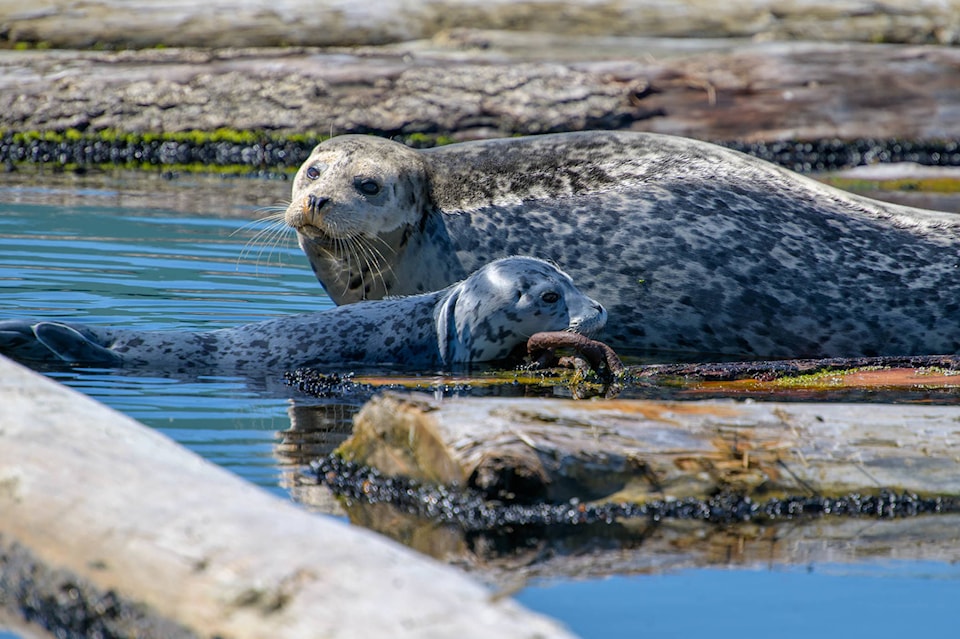When one door closes another door opens, and the COVID-19 pandemic has certainly closed a lot of doors this year.
Dr. David Rosen, a marine mammal researcher and assistant professor at the University of British Columbia’s Institute of Fisheries and Oceans, should be spending his time with animals at the Vancouver Aquarium, or delving into lab research somewhere else, but when the pandemic forced travel restrictions and cut into funding and resources, it forced him to see opportunities in his own back yard, with the hopes of answering some neglected questions of what role our cities play in the behaviour of marine mammals, and why it appears so many are returning to Vancouver waterways.
“Researchers tend to think about going to exotic locations and isolated areas, and can be sort of blind to local opportunities. Thinking about it I realized that [Burrard Inlet] has fantastic research opportunities,” Rosen said.
“Vancouver is a really interesting place because we love our nature, but we also love our development, so we’re getting a couple studies off the ground looking at what that urbanization means to our local marine mammal populations.”
Burrard Inlet is largely neglected scientifically but provides a curious avenue of research by comparing the two arms of the inlet. They each have the historic capacity to host an equal array of sea life, due to their geographical proximity, but one heads east to Port Moody past highly developed areas, and the other turns north into undeveloped territory in Indian Arm.
READ MORE: Abundance of one salmon species affects all others, B.C. study suggests
Rosen also plans to look closely at the increase number of harbour seals, the emergence of fur seals and California sea lions, and increased sightings of transient killer whales and dolphins in Vancouver waterways, surprising new behaviour as the metro area undergoes behavioral changes of its own during the pandemic.
“We think this is new, but the question is, ‘who was paying attention to this before the pandemic?’ But things like transient killer whales, the public always notices that,” Rosen said.
Harbour seals is especially important, as the animals were once hunted to critically low numbers to protect commercial fisheries. As debates heat up over their reemergence, during the worst salmon returns on record, Rosen said its important to establish the human impacts on the animals while the opportunity exists.
A reemergence of a “whole suite” of marine mammals have also been observed in Burrard Inlet prior to the closure of a UBC field station last year, but the resources and time wasn’t available to probe the reasons why the animals were returning.
It’s too early for Rosen to anticipate any conclusions or possible implications to his research. Right now he only wants to know what is happening, and why.
“You can’t make management decisions if you don’t know what’s out there,” Rosen said.
From a conservation perspective, he added British Columbians are acutely aware of the major marine issues at sea, but there’s too little known about our marine life in this context, in relation to the cities, pollution and marine traffic.
Rosen is hoping to find research funding in the industrial sector in the area, which he said has regularly proven its readiness to adapt for the betterment of marine mammals.
Maybe those efforts are paying off for the sea life. Maybe changing ocean temperatures, acidity and food supply are forcing behavioural changes, or maybe its the growing number of salmon hatcheries attracting more mammals to the Inlet.
“There’s lots of questions and lots of opportunity for improving our knowledge,” Rosen said.
“No doubt, the biggest challenge for the marine ecosystem is climate change, but it’s very difficult for people to get their head around that, to think they can do anything to help. So in some ways, finding local issues is a great way to make people aware of the human impact on the environment.”
READ MORE: Fed offers $2.3 million for plastics-based scientific research
